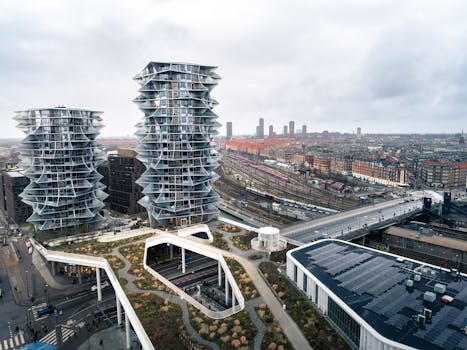
Urban Green Spaces: The Future of Outdoor Living in European Cities by 2025
Urban Green Spaces: The Future of Outdoor Living in European Cities by 2025 is a concept that has gained significant attention in recent years. As the world becomes increasingly urbanized, the importance of green spaces in cities cannot be overstated. These areas provide a range of benefits, from improving air quality and mitigating the urban heat island effect to enhancing biodiversity and promoting physical and mental well-being.
Introduction to Urban Green Spaces
Urban green spaces refer to any area in a city that is covered with vegetation, including parks, gardens, green roofs, and urban forests. These spaces can be public or private and can range in size from small gardens to large national parks. The benefits of urban green spaces are numerous, and they play a critical role in creating sustainable and livable cities.
Benefits of Urban Green Spaces
The benefits of urban green spaces are multifaceted. Some of the most significant advantages include:
- Improved air quality: Urban green spaces help to remove pollutants from the air, improving the quality of life for citizens.
- Climate regulation: Green spaces can mitigate the urban heat island effect, reducing the temperature in cities and improving comfort levels.
- Enhanced biodiversity: Urban green spaces provide habitats for a range of plant and animal species, helping to maintain ecosystem services.
- Promotion of physical and mental well-being: Access to green spaces has been shown to improve physical and mental health, reducing stress and promoting relaxation.
European Cities Leading the Way
Many European cities are at the forefront of urban green space development, recognizing the importance of these areas in creating sustainable and livable cities. Some examples include:
- Copenhagen, Denmark: The city has implemented a range of green initiatives, including the creation of green roofs and walls, and the development of urban forests.
- Amsterdam, Netherlands: The city has a long history of green space development, with a range of parks and gardens, including the famous Vondelpark.
- Barcelona, Spain: The city has implemented a range of green initiatives, including the creation of green spaces and the promotion of urban agriculture.
Challenges and Opportunities
While there are many benefits to urban green spaces, there are also challenges to be addressed. Some of the most significant include:
- Space constraints: Many cities face significant space constraints, making it difficult to create new green spaces.
- Funding: The development and maintenance of urban green spaces require significant funding, which can be a challenge for many cities.
- Community engagement: The success of urban green spaces depends on community engagement and participation, which can be difficult to achieve.
Despite these challenges, there are many opportunities for the development of urban green spaces in European cities. With the use of innovative technologies, such as green roofs and walls, and the engagement of local communities, it is possible to create sustainable and livable cities that prioritize the well-being of citizens and the environment.
Conclusion
Urban Green Spaces: The Future of Outdoor Living in European Cities by 2025 is a concept that has the potential to transform the way we live and interact with our environment. By prioritizing the development of green spaces, cities can improve the quality of life for citizens, contribute to a healthier environment, and create sustainable and livable cities for future generations.






